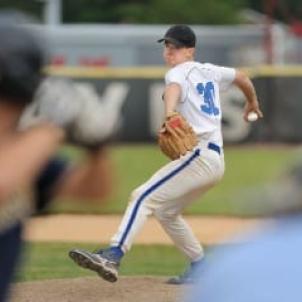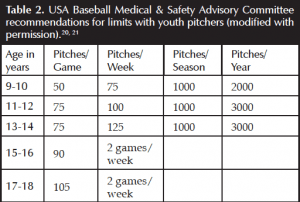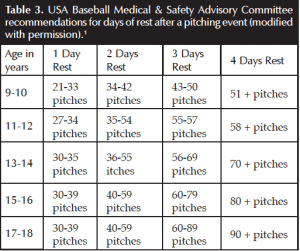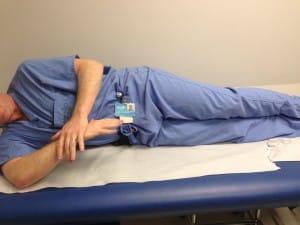
Baseball Pitchers and Volleyball Spikers Have Something in Common: Similar Shoulder and Elbow Injuries
By J. Lee Pace, MD, director of Sports Medicine, Jackie and Gene Autry Orthopedic Center.
Spring is upon us and that means all our young baseball players are gearing up for the season! Since we’re in Southern California, baseball is pretty much year round. Not to mention volleyball, soccer and most sports you can think of. Given our fortunate weather circumstances, our children get the opportunity to engage in active sporting events all the time. As health care providers, we love this constant level of activity. However, with so much opportunity to play organized sports, there is a real risk of our young athletes overdoing it and sustaining an injury. This is known in doctor speak as an “overuse injury.”
The Overlooked Shoulder

For years, baseball has received most of the attention on overuse injuries-as it should. At Children’s Hospital Los Angeles, I see young pitchers and catchers every year with elbow and shoulder injuries from throwing too much. However, I have been seeing more arm injuries in our young volleyball players. An interesting finding is that the injuries seen between the two groups of athletes are often the same! After learning a little more about volleyball I started to realize how these athletes are overusing their shoulders and elbows just like our young baseball pitchers and catchers.
The act of pitching a baseball is a highly coordinated event that starts in the feet and legs and works its way up through the trunk (middle of the body), into the shoulder, down the arm to the elbow and eventually to the hand with the end result being release of the ball from the hand at very high speeds. If there is a portion of the body that is out of whack it can cause injury not only at that site but also in other parts of the body. The same is true of overhead volleyball serves and spikes. Volleyball players concentrate energy in their legs and transmit that energy through their trunks and shoulders and down their arms. This allows them to serve or spike a ball with the power and precision that is so impressive and fun to watch.
In both circumstances, the shoulder muscles generate and transmit an incredible amount of energy and serve as the transition point where built up energy is transferred from the rest of the body down the arm. After too many pitches or serves, these shoulder muscles get overworked and tend to cause the shoulder to tighten up. When this occurs, the shoulder doesn’t function properly and can cause injury in the shoulder as well as the elbow. Most of the time, just the elbow ends up hurting while the shoulder is pain-free. This is a problem if the hurting elbow is addressed but not the tight shoulder. This is the most common situation and can lead to repeat injuries if the shoulder tightness is not noticed and treated. Sometimes, the shoulder hurts too and while it is a bummer to have pain in two spots, it makes it easier to diagnose both areas as a problem.
Help From Experts
Fortunately, in the Sports Medicine Program at the Jackie and Gene Autry Orthopedic Center, our specialists provide the best methods for treating these injuries and excellent advice to prevent them. A good physical therapy program aimed at loosening up the tight shoulder is the key to success. Of course, the painful elbow will be treated as well. The success rate for this treatment is very high but the downside is that our young athletes may need six weeks to three months or more, out of their sports. Preventing the injury in the first place is the best idea!


From: Kerut EK, Kerut DG, Fleisig GS, Andrews JR. Prevention of Arm Injuries in Youth Baseball Pitchers. J La Med Assoc 2008;March/April 160:95-98.
Pitch Counts
There is well established pitch counts put in place based on the age of the athlete. However, a lot of these pitch counts are only counted during organized play and aren't taken into account during pick up games or private coaching. The situation gets trickier with volleyball players. The concept of these athletes overworking their shoulders and elbows is not common knowledge and hasn't been studied much so we don’t know how much is too much. For the pitchers, we have guidelines, which are listed to the right on how much rest is required based on age and amount of pitches thrown. These pitch counts should also apply for catchers but this has not been done yet. As a general rule, a catcher should follow the same pitch and throw count as pitchers when they are practicing their throws from home to second base. Catchers may not need as much rest as pitchers.
Prevention
As a means of prevention, the best thing to do is have coaches encourage their athletes to do “sleeper stretches” on a routine basis (The image below represents what the stretch looks like). The goal of the sleeper stretch is to keep the shoulder from getting too tight. If the shoulder doesn’t tighten, then there is less chance that it can injure the elbow or get injured itself. Rest days for pitchers is well recognized (maybe not always adhered to) but catchers and volleyball players should have at least one day off a week from practice, ideally two. This is in addition to our young athletes playing a few different sports throughout the year and also taking some time off from sports, a month per year seems to be a good round number. Baseball and volleyball are fun and great exercise for our children and teenagers. If we can do a few things to prevent injury, we can keep them in the game for the long haul!
Sleeper Stretch



